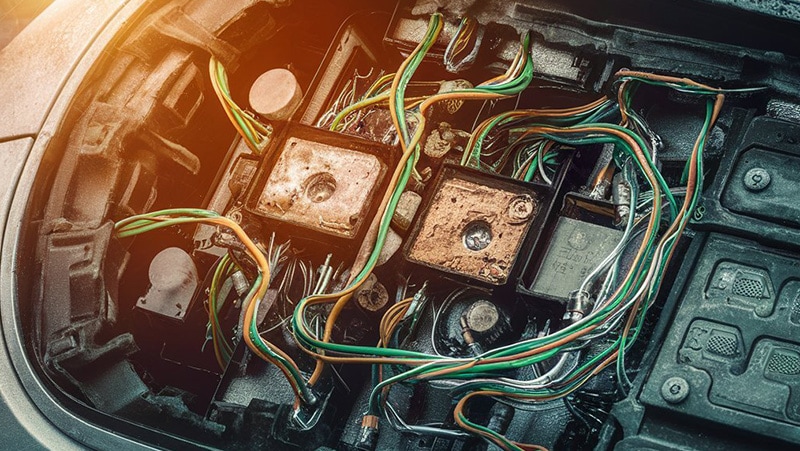
What is BMS’s role in second-life battery applications?
Continuing our exploration about the second life of batteries, the circular economy, and the most promising technologies and projects focused on battery reuse, recycling, and repurposing, this article explores the fundamentals of BMS technology, its applications, and its role in promoting sustainable practices in energy storage.
What does a BMS do?
The BMS’s job is to keep the battery safe and reliable. It is a safeguard for rechargeable batteries that helps them run properly. A BMS is a computer that gets critical data about the battery cells such as voltage and temperature, through sensors, transfers energy from one battery cell to another, and guarantees that each battery cell operates within a range of parameters. These parameters include:
- Average temperature, temperatures of individual cells, coolant intake and output temperature,
- Total voltage, voltages of individual cells, or voltage of periodic taps,
- The flow of the liquid-cooled batteries,
- Current in or out of the battery,
- Individual cell’s health,
- State of cell balance (available capacity of a battery pack with multiple cells and each cell’s longevity).
A BMS protects the battery from exceeding the established parameters such as over-charging and over-discharging, over-temperature and under-temperature, etc. By maintaining optimal operating conditions, a BMS maximizes energy efficiency and ensures the safety and reliability of battery systems.
Battery Data, State-of-Charge (SoC) and State-of-Health (SoH)
The role of a BMS is to protect the battery and monitor its “health”. It’s important to mention what parameters are important to understand the state of the battery. There are two important numbers generated by the BMS to showcase battery performance – State-of-Charge (SoC) and State-of-Health (SoH).
State-of-Charge (SoC)
- State-of-Charge (SoC) gives us an estimate of how charged the battery is. It’s usually shown in percentages, where 100% is charged, and 0% is empty. But BMS not only gives us an estimate, it also ensures that each cell is charging equally.
State-of-Health (SoH)
- State-of-Health (SoH) will show us if the battery is no longer able to perform according to its nominal parameters. For example, 100% in this case would mean that the battery matches its specifications. And the lower the number goes, the less time the battery has to stay operational.
Why do we need to use a BMS?
BMS’s were developed to address the key challenges and safety concerns associated with lithium-ion and other rechargeable battery technologies. BMS’s helped to address these three key questions related to the usage of lithium-ion batteries:
Ensure safety
- Lithium-ion battery packs have high density but that also is a bigger fire risk. A BMS, for example, prevents the battery from overheating. It also prevents short-circuiting, which is a number one electrical problem.
Prolong battery life
- The previously mentioned unexpected short circuits, overheating, or any stepping out of set parameters, no matter how quickly caught, are a significant downgrade for SoH and potentially reduce a battery’s life.
Reduce costs
- Introducing the BMS takes time and funds, but the protection it supplies, the maintenance in terms of functional safety, performance, lifespan and reliability, and diagnostics is a great money-saver.
BMS’s role in second-life applications
During the lifespan of an EV, the battery gradually loses its capacity and charging cycles. After a certain time, the battery can no longer provide the required range or performance, however, it remains suitable for second-life applications. We covered second-life batteries’ huge potential in this article.
The great potential of used lithium-ion batteries for the circular economy comes with certain challenges, one of them is understanding batteries type and condition and ensuring that cells that are supposed to be used in second-life applications have similar electrode chemistry and condition. Solving this problem would mean better efficiency and less costs of second-life applications such as, for example, energy storages, and would minimize environmental effects at the same time contributing to a circular economy.
Battery management systems, being the brain of the battery, hold some of this data at pack level but OEMs do not typically provide this information. Obtaining cell-level SoX data requires time-consuming and costly methods, however, the Recirculate consortium is working to address them and develop reliable tools and processes to accelerate the characterization of battery SoX at the pack, module, cell, and other levels.
In our next articles, we will dive deeper into battery characterization and the role of data for second-life applications as well as ways to safely collect, store and transfer critical information about battery packs and cells.